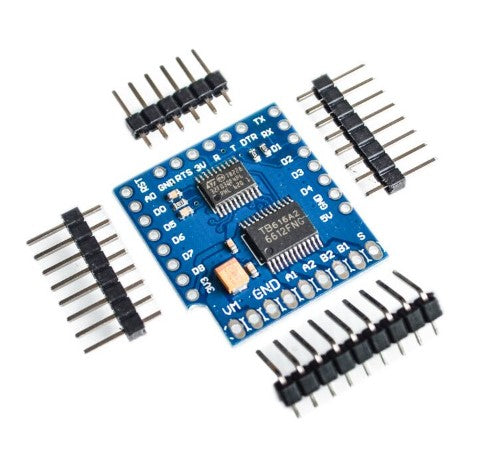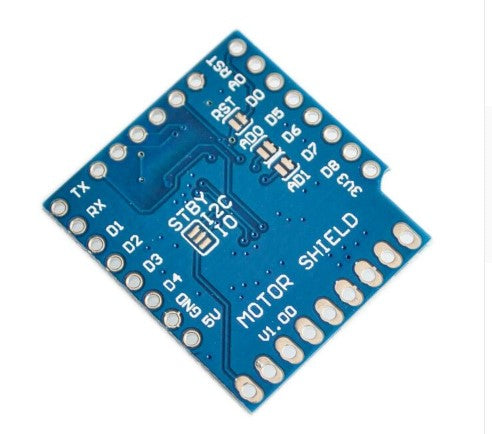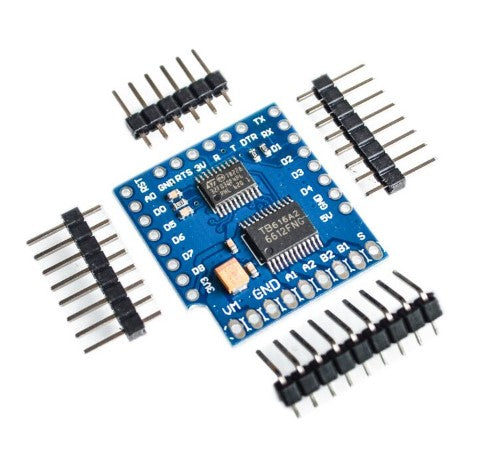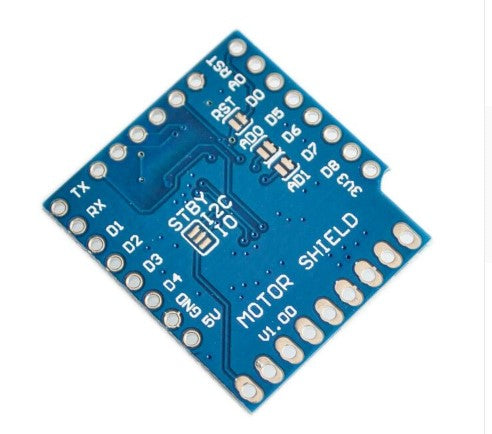WeMos Motor Driver Shield TB6612FNG - Looking for a more stable and tinier DC motor controller for your microcontroller system? This item might pique your interest. The TB6612FNG Motor Driver can control up to two DC motors at a constant current of 1.2A (3.2A peak). Two input signals (IN1 and IN2) can control the motor in one of four function modes: CW, CCW, short-brake, and stop. The two motor outputs (A and B) can be separately controlled, and the speed of each motor is controlled via a PWM input signal with a frequency up to 100kHz. The STBY pin should be pulled high to take the motor out of standby mode. It's smaller than the traditional L298N controller but is more efficient and does not need any heat sink.
Frequently asked questions about WeMos Motor Driver Shield TB6612FN
Q1: Are drivers for stepper motors required?
Drivers are necessary for stepper motors. Typically, there are 200 steps or 1.8 degrees every revolution (but they also can be "micro-stepped").
A DPDT relay can also be used to reverse a DC motor, however generally an H-driver is used. A DC motor's speed can be adjusted using PWM (similar to dimming an LED) and a MOSFET or transistor, but not as precisely as with a stepper motor. It's a reasonable method for controlling the speed of a fan or anything else where precise RPM isn't necessary.
If you utilize a speed sensor that provides feedback to the microcontroller, you can receive accurate RPM readings. The same H-driver transistors/MOSFETs are utilized for both direction and speed control if an H-driver is being used.
Servo motors are shipped with drivers. A servo doesn't complete a full rotation. It typically rotates through 270 degrees. By altering the timing of a pulse, the servo's angle can be changed.
Q2: Why do I need to apply a Power Jumper to the motor shield?
You can see there is no voltage on the ArduinoVin and, as a result, no +5V to either the Arduino or the L293 VCC1 if you remove the jumper and simply give power to the motor shield extension pwr pins (pin-16). If and only if the voltage is high enough to feed the Arduino +5V and the L298 +5V, the jumper links the ext motor power connections to the ArduinoVin and enables you to operate everything off that power.
The additional dc power jack provides the ArduinoVin and, as a result, the L298 VCC1 if the jumper is removed and power is first applied to the motor and subsequently the Arduinoext dc power connector.
You can see there is no voltage on the ArduinoVin and, as a result, no +5V to either the Arduino or the L293 VCC1 if you remove the jumper and simply give power to the motor shield extension pwr pins (pin-16). If and only if the voltage is high enough to give the Arduino +5V and the L298 +5V, the jumper links the ext motor pwr terminals to the ArduinoVin and enables you to operate everything off that power.
When the jumper is removed, you will observe that the ext dc power jack provides the ArduinoVin and, consequently, the L298 VCC1 when you first power the motor and then the Arduinoext dc power jack.
Specifications:
- Power supply voltage: VM = 15V max, VCC = 2.7–5.5V
- Output current: Iout = 1.2A (average) / 3.2A (peak)
- Standby control to save power
- CW/CCW/short-brake/stop motor control modes
- Built-in thermal shutdown circuit and a low-voltage detecting circuit
- All pins of the TB6612FNG broken out to 0.1" spaced pins
- Filtering capacitors on both supply lines
Inclusions: 1 x WeMos Motor Driver Shield TB6612FNG
-
Schematic
-
Eagle Files
-
Hookup Guide
-
Datasheet (TB6612FNG)
-
bildr Tutorial
-
GitHub
WeMos Motor Driver Shield TB6612FNG
WeMos Motor Driver Shield TB6612FNG
18 in stock
Product Code
SKU:AC017
Couldn't load pickup availability




